A Broadband Transmitarray Antenna Using a Metasurface-Based Element for Millimeter-Wave Applications
Abstract
1. Introduction
2. Design and Analysis of the TA Element
2.1. The Proposal and Evolution of the TA Element
2.1.1. Single Linearly Polarized Metasurface Antenna Fed by a Stripline
2.1.2. Differential-Driven Metasurface Antenna Fed by Striplines
2.1.3. Structure of the TA Element
2.2. Performance and Analysis of the TA Element
3. Experiment Results and Discussion
4. Conclusions
Author Contributions
Funding
Data Availability Statement
Conflicts of Interest
References
- Hong, W.; Jiang, Z.H.; Yu, C.; Hou, D.; Wang, H.; Guo, C.; Hu, Y.; Kuai, L.; Yu, Y.; Jiang, Z.; et al. The role of millimeter-wave technologies in 5G/6G wireless communications. IEEE J. Microw. 2021, 1, 101–122. [Google Scholar] [CrossRef]
- Chipengo, U.; Sligar, A.; Carpenter, S. High fidelity physics simulation of 128 channel MIMO sensor for 77GHz automotive radar. IEEE Access 2020, 8, 160643–160652. [Google Scholar] [CrossRef]
- Liu, S.; Sato, H.; Chen, Q. A wideband 1 bit transmitarray antenna design with flat gain response. IEEE Trans. Antennas Propag. 2020, 68, 7046–7055. [Google Scholar] [CrossRef]
- Ryan, C.G.M.; Chaharmir, M.R.; Shaker, J.; Bray, J.R.; Antar, Y.M.M.; Ittipiboon, A. A wideband transmitarray using dual-resonant double square rings. IEEE Trans. Antennas Propag. 2010, 58, 1486–1493. [Google Scholar] [CrossRef]
- Abdelrahman, A.H.; Elsherbeni, A.Z.; Yang, F. High-gain and broadband transmitarray antenna using triple-layer spiral dipole elements. IEEE Antennas Wireless Propag. Lett. 2014, 13, 1288–1291. [Google Scholar] [CrossRef]
- Tian, C.; Jiao, Y.-C.; Zhao, G.; Wang, H. A wideband transmitarray using triple-layer elements combined with cross slots and double square rings. IEEE Antennas Wireless Propag. Lett. 2017, 16, 1561–1564. [Google Scholar] [CrossRef]
- Li, M.-Y.; Ban, Y.-L.; Yan, F.-Q. Wideband Low-Profile Ku-Band Transmitarray Antenna. IEEE Access 2021, 9, 6683–6688. [Google Scholar] [CrossRef]
- Pham, K.; Pham, N.T.; Clemente, A.; Di Palma, L.; Le Coq, L.; Dussopt, L.; Sauleau, R. Design of wideband dual linearly polarized transmitarray antennas. IEEE Trans. Antennas Propag. 2016, 64, 2022–2026. [Google Scholar] [CrossRef]
- Liu, S.L.; Lin, X.Q.; Yang, Z.Q.; Chen, Y.J.; Yu, J.W. W -band low-profile transmitarray antenna using different types of FSS units. IEEE Trans. Antennas Propag. 2018, 66, 4613–4619. [Google Scholar] [CrossRef]
- Yi, X.; Su, T.; Li, X.; Wu, B.; Yang, L. A double-layer wideband transmitarray antenna using two degrees of freedom elements around 20 GHz. IEEE Trans. Antennas Propag. 2019, 67, 2798–2802. [Google Scholar] [CrossRef]
- Yi, X.; Su, T.; Wu, B.; Chen, J.; Yang, L.; Li, X. A double-layer highly efficient and wideband transmitarray antenna. IEEE Access 2019, 7, 23285–23290. [Google Scholar] [CrossRef]
- Abdelrahman, A.H.; Nayeri, P.; Elsherbeni, A.Z.; Yang, F. Bandwidth improvement methods of transmitarray antennas. IEEE Trans. Antennas Propag. 2015, 63, 2946–2954. [Google Scholar] [CrossRef]
- Lau, J.Y.; Hum, S.V. A wideband reconfigurable transmitarray element. IEEE Trans. Antennas Propag. 2012, 60, 1303–1311. [Google Scholar] [CrossRef]
- Xiao, Y.; Yang, F.; Xu, S.; Li, M.; Zhu, K.; Sun, H. Design and implementation of a wideband 1-bit transmitarray based on a yagi–vivaldi unit cell. IEEE Trans. Antennas Propag. 2021, 69, 4229–4234. [Google Scholar] [CrossRef]
- Li, M.; Al-Joumayly, M.A.; Behdad, N. Broadband true-time-delay microwave lenses based on miniaturized element frequency selective surfaces. IEEE Trans. Antennas Propag. 2013, 61, 1166–1179. [Google Scholar] [CrossRef]
- Carrasco, E.; Encinar, J.A.; Barba, M. Bandwidth improvement in large reflectarrays by using true-time delay. IEEE Trans. Antennas Propag. 2008, 56, 2496–2503. [Google Scholar] [CrossRef]
- Liu, W.; Chen, Z.N.; Qing, X. Metamaterial-based low-profile broadband aperture-coupled grid-slotted patch antenna. IEEE Trans. Antennas Propag. 2015, 63, 3325–3329. [Google Scholar] [CrossRef]
- Lin, F.H.; Chen, Z.N. Low-profile wideband metasurface antennas using characteristic mode analysis. IEEE Trans. Antennas Propag. 2017, 65, 1706–1713. [Google Scholar] [CrossRef]
- Lin, W.E.I.; Chen, Z.N.; Qing, X.; Shi, J.; Lin, F.H. Miniaturized wideband metasurface antennas. IEEE Trans. Antennas Propag. 2017, 65, 7345–7349. [Google Scholar]
- Xue, Q.; Liao, S.W.; Xu, J.H. A differentially-driven dual-polarized magneto-electric dipole antenna. IEEE Trans. Antennas Propag. 2013, 61, 425–430. [Google Scholar] [CrossRef]
- Zhai, Z.J.; Lin, F.; Zhao, G.Q.; Sun, H.J. A wideband thin transmitarray antenna by using L-probe patch antenna with true-time delay. IEEE Antennas Wireless Propag. Lett. 2023, 22, 2492–2496. [Google Scholar] [CrossRef]

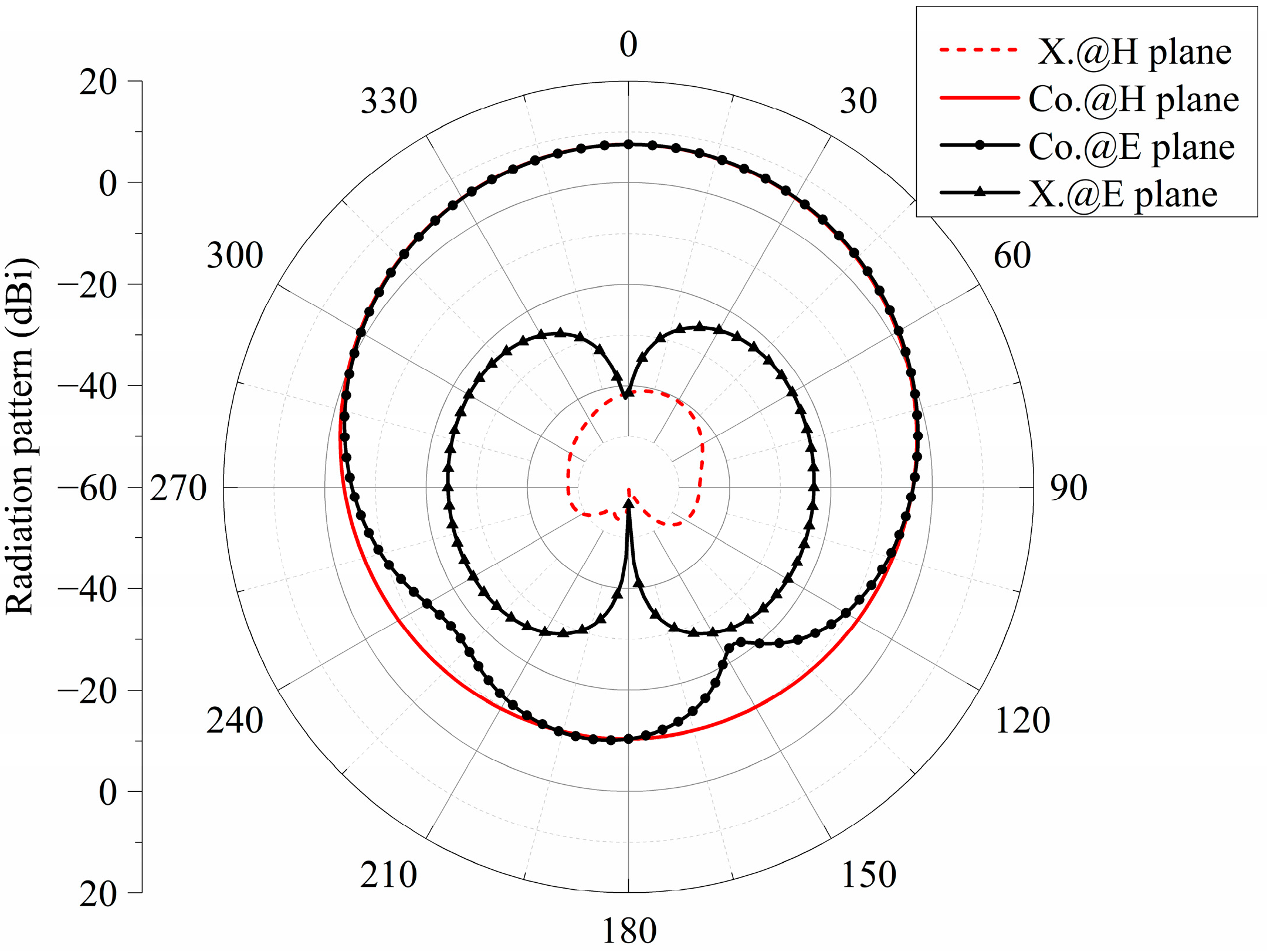
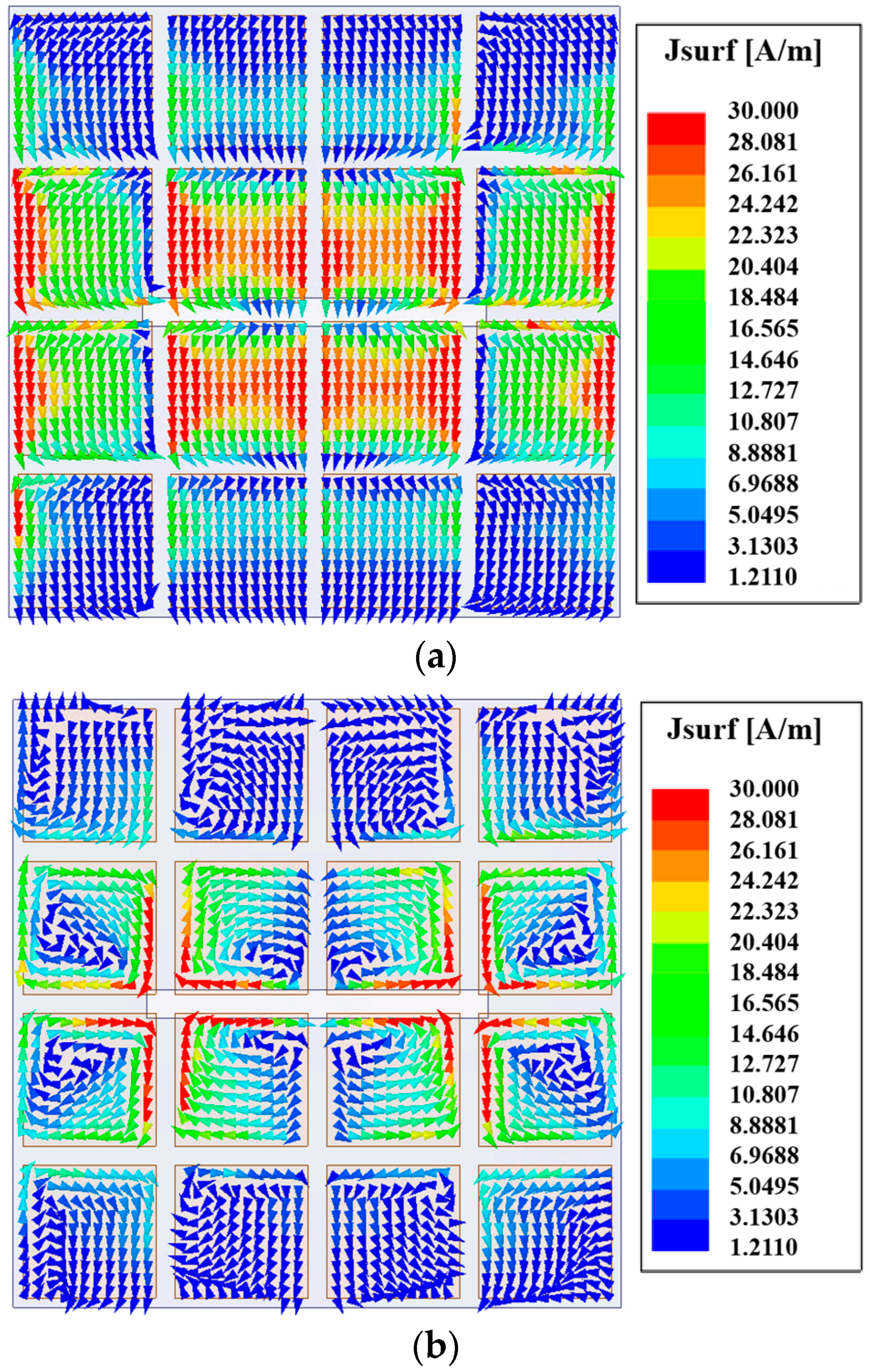
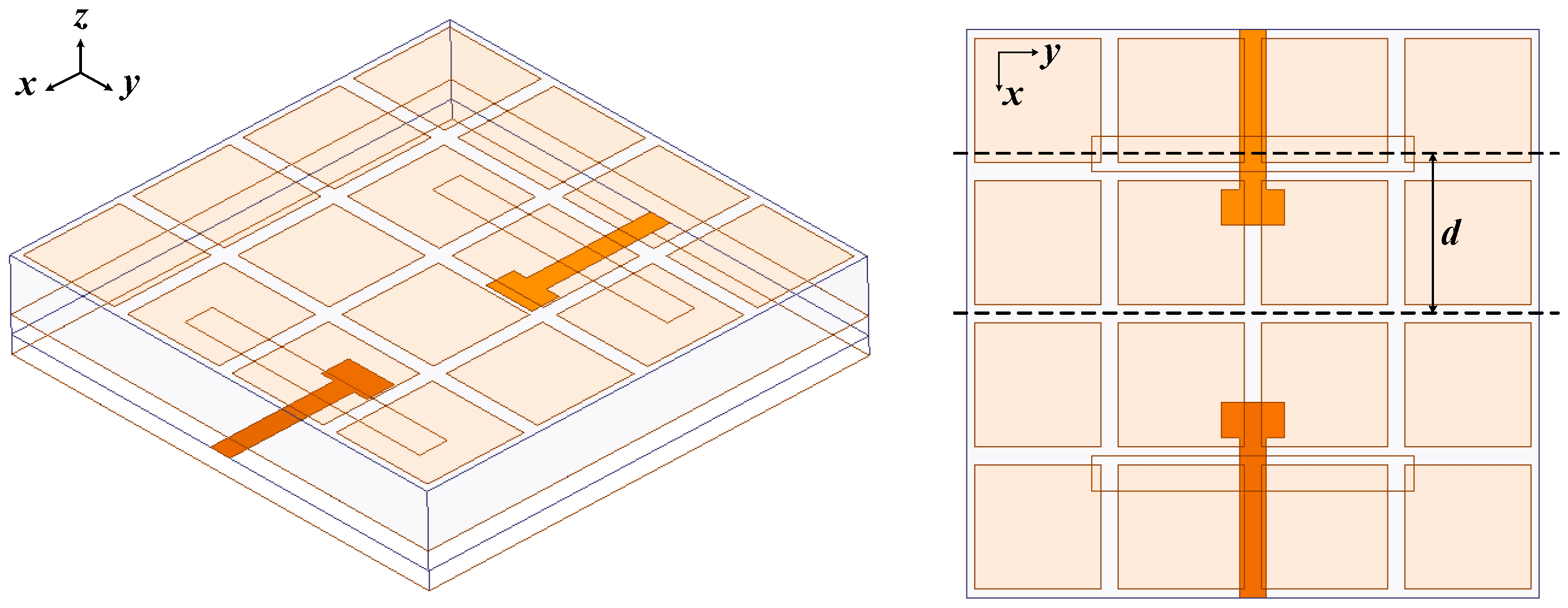
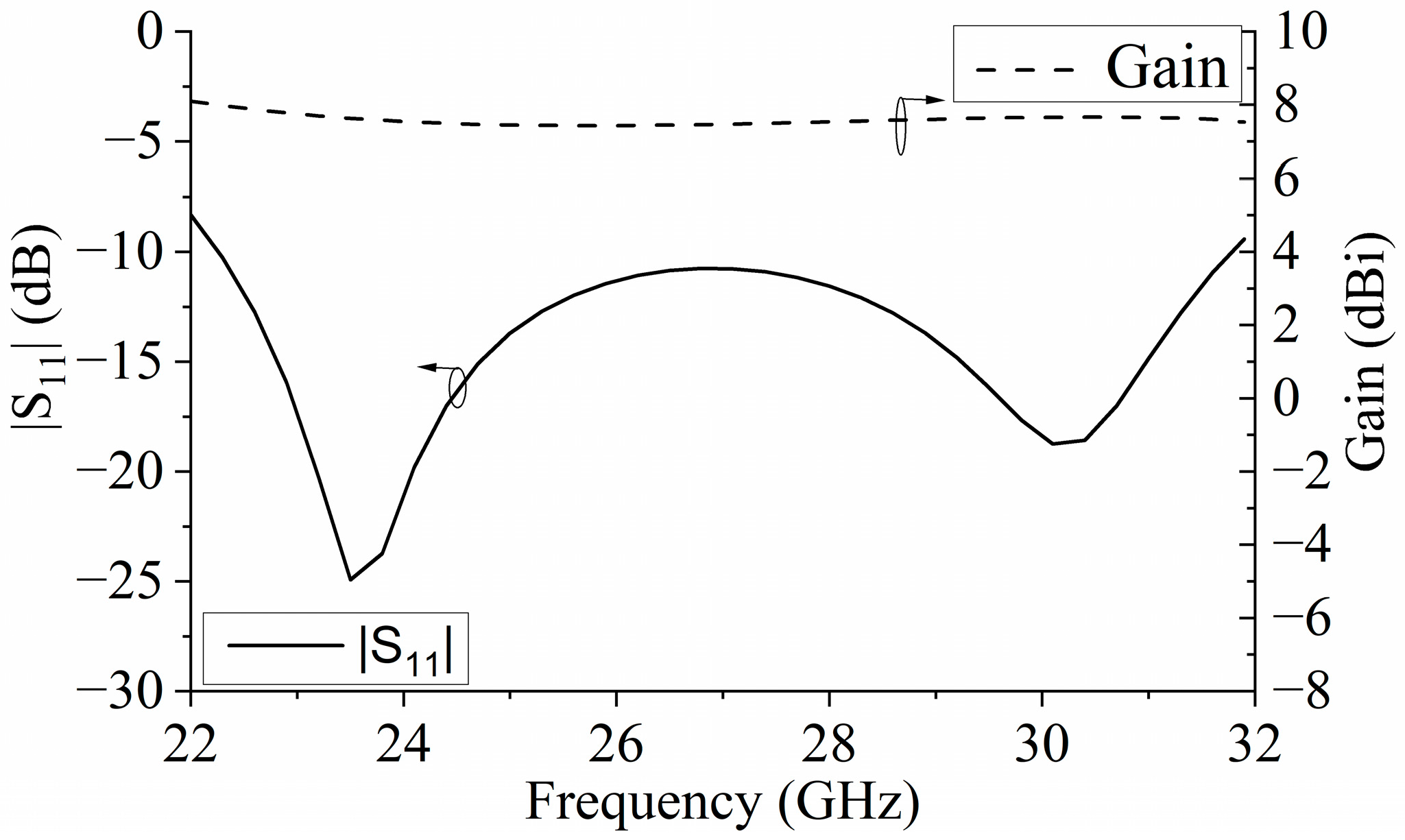
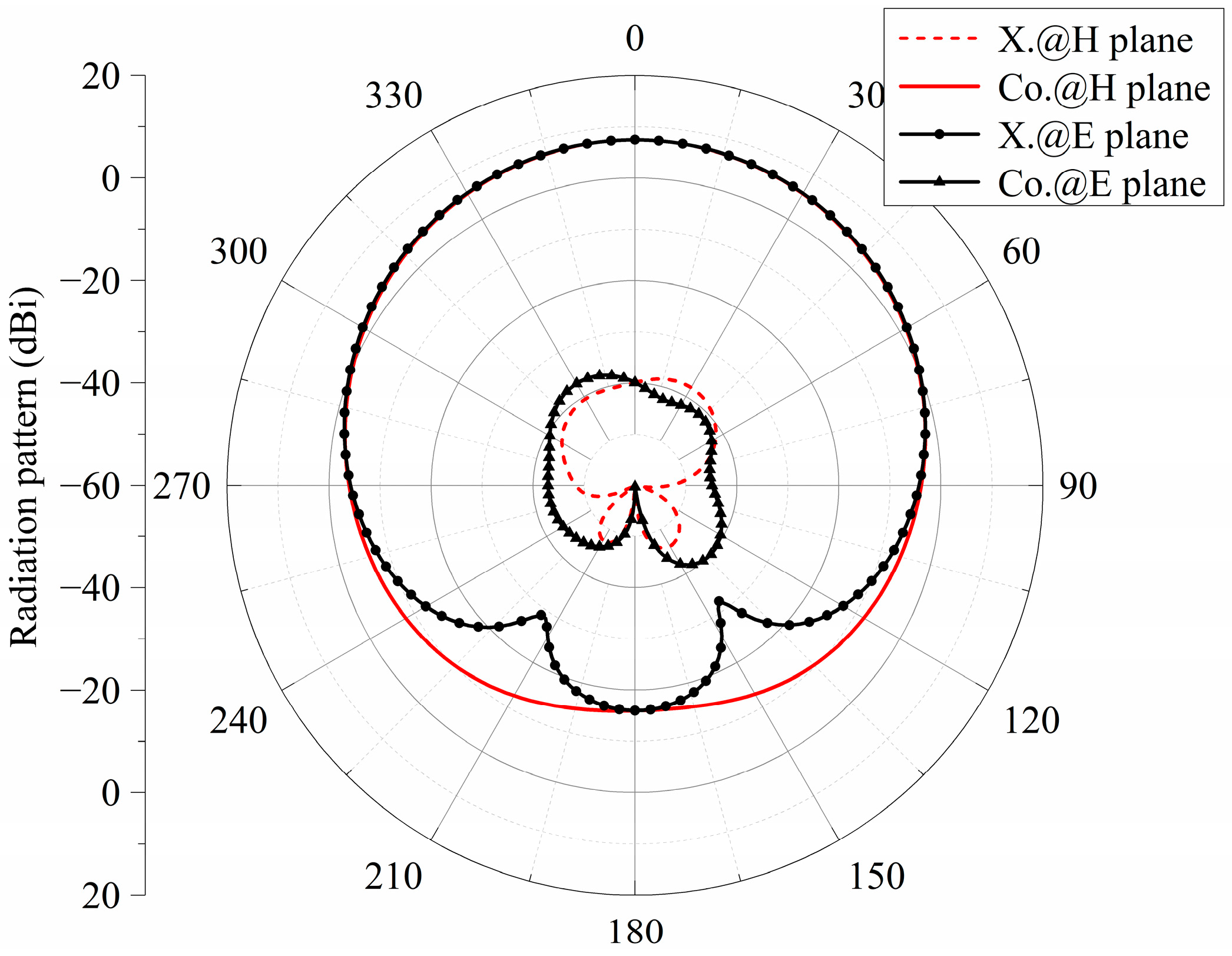
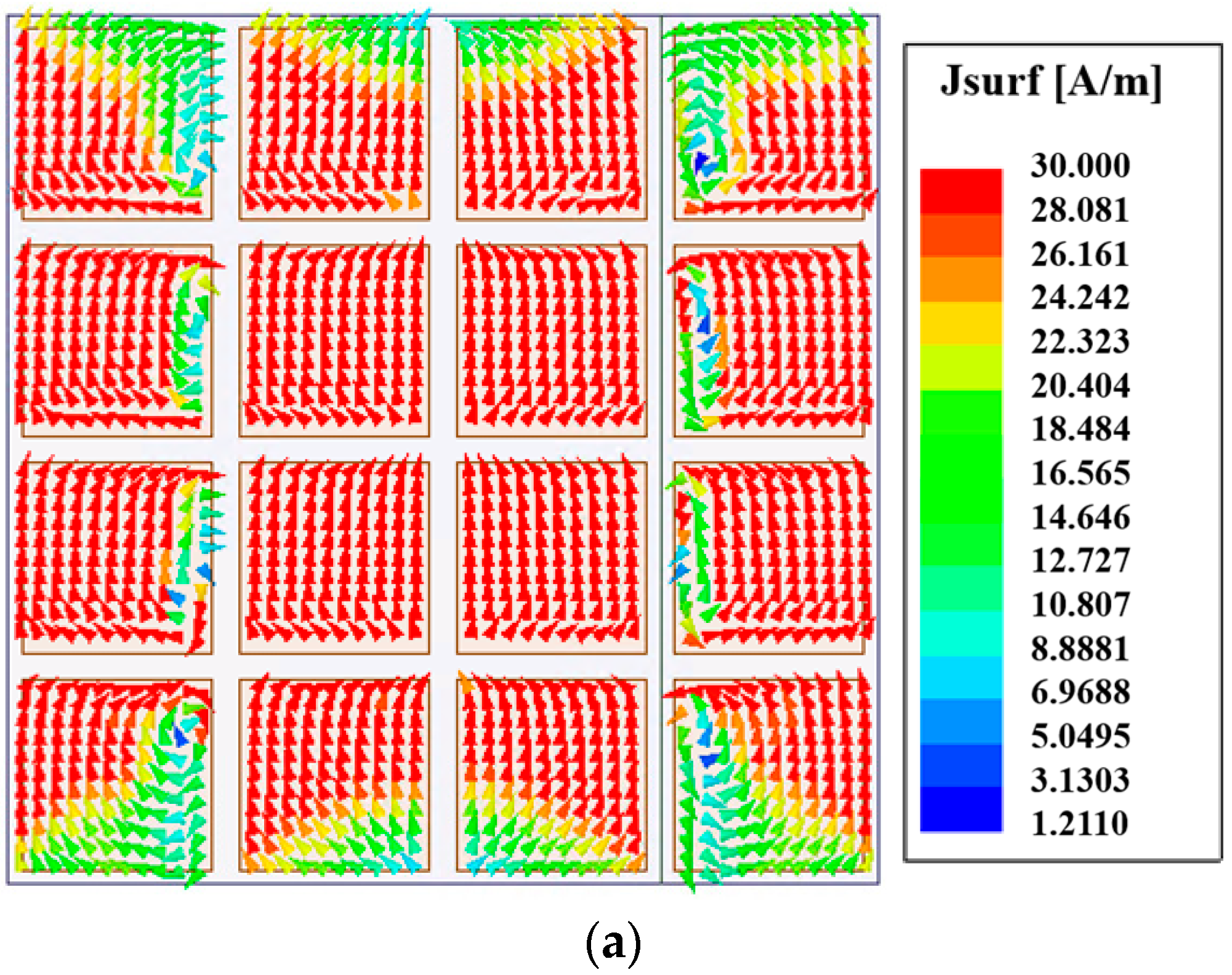

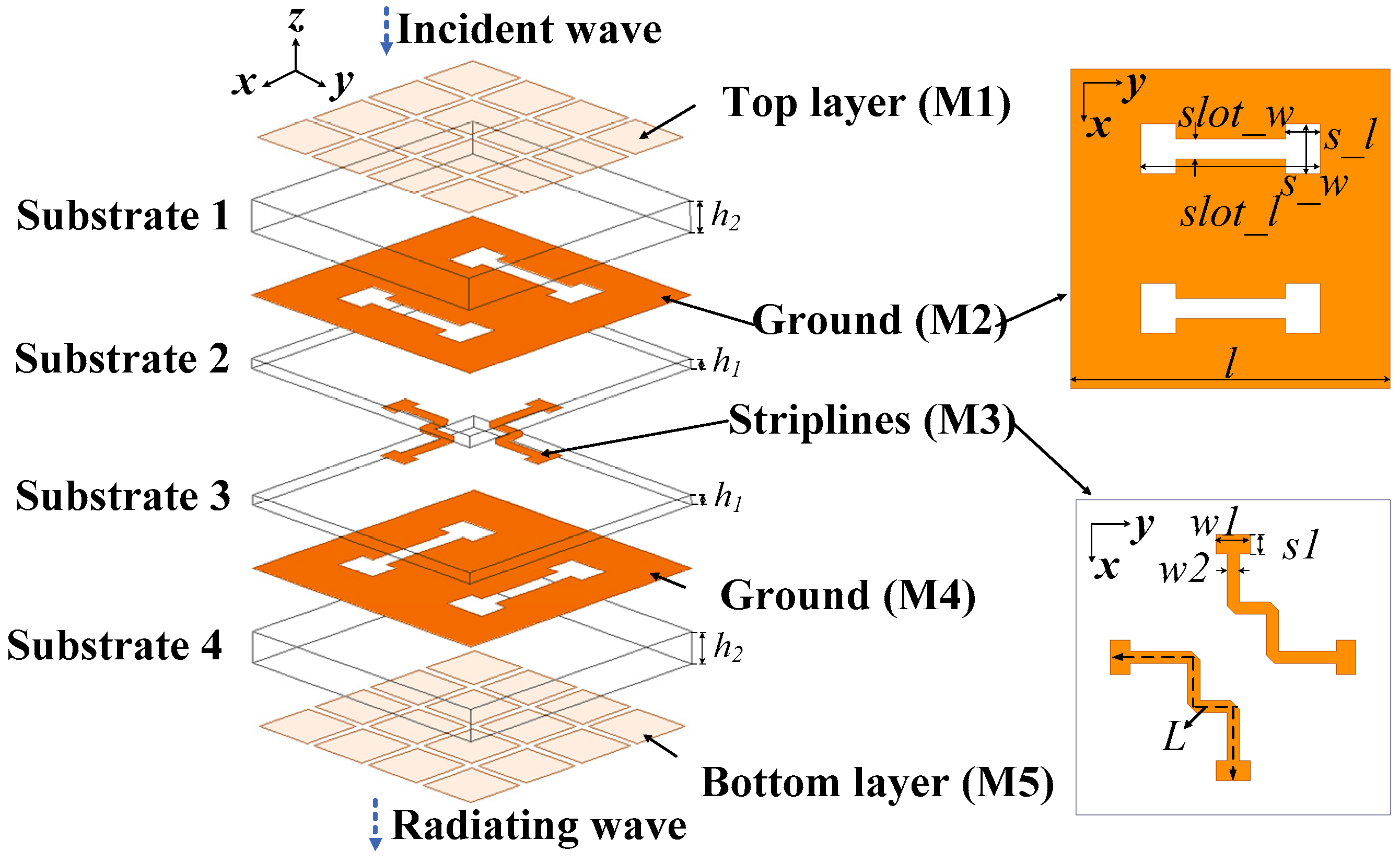
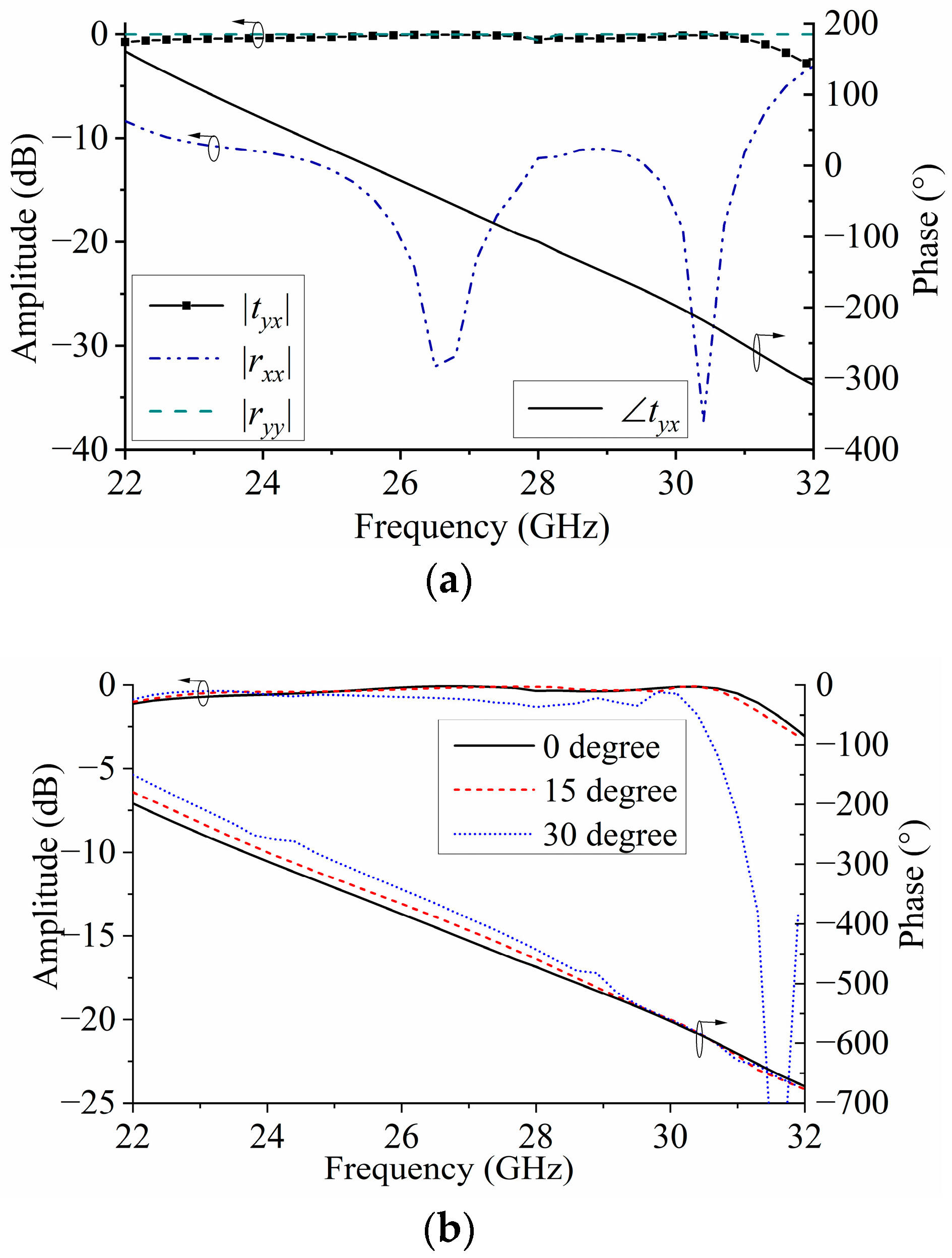
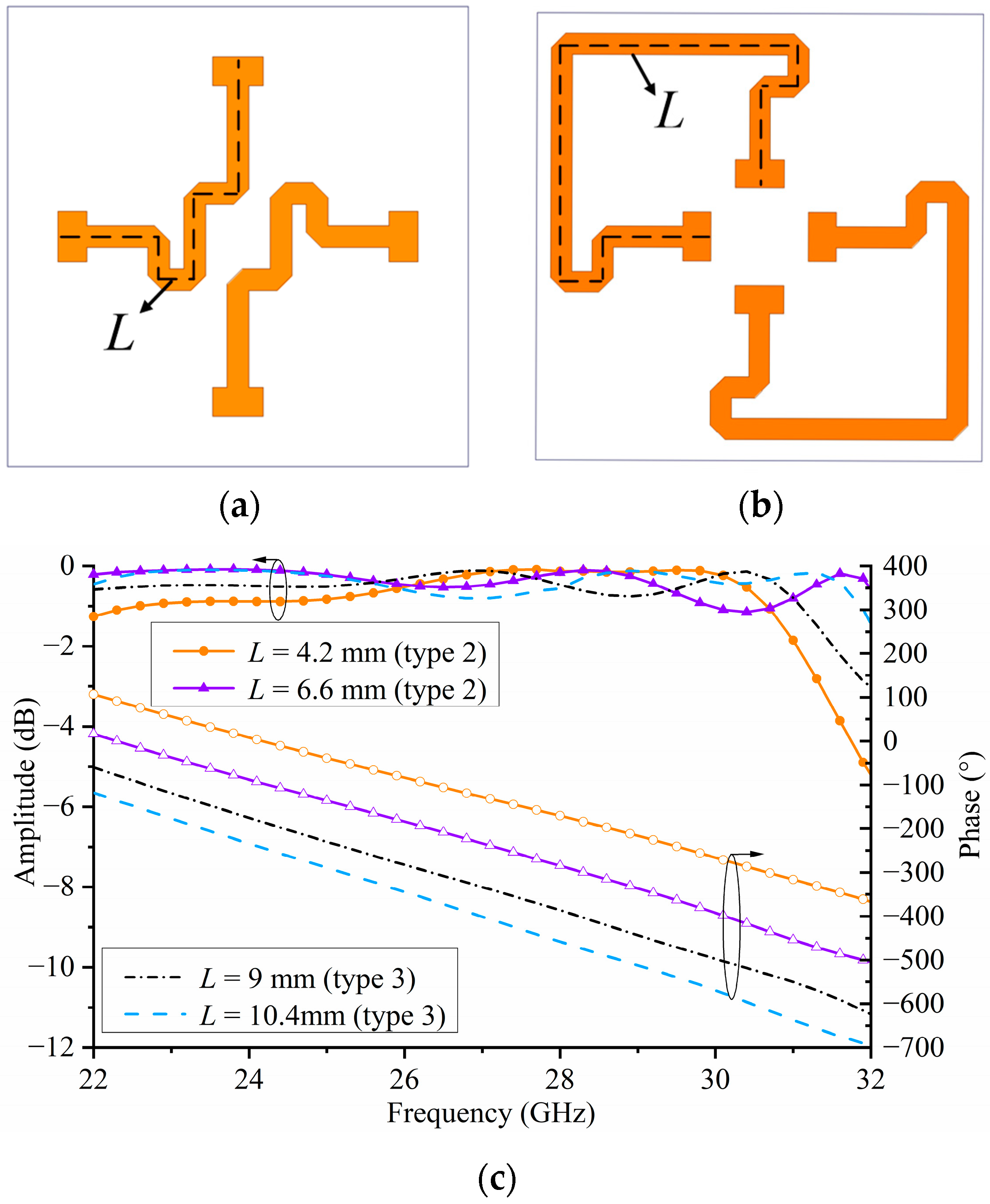
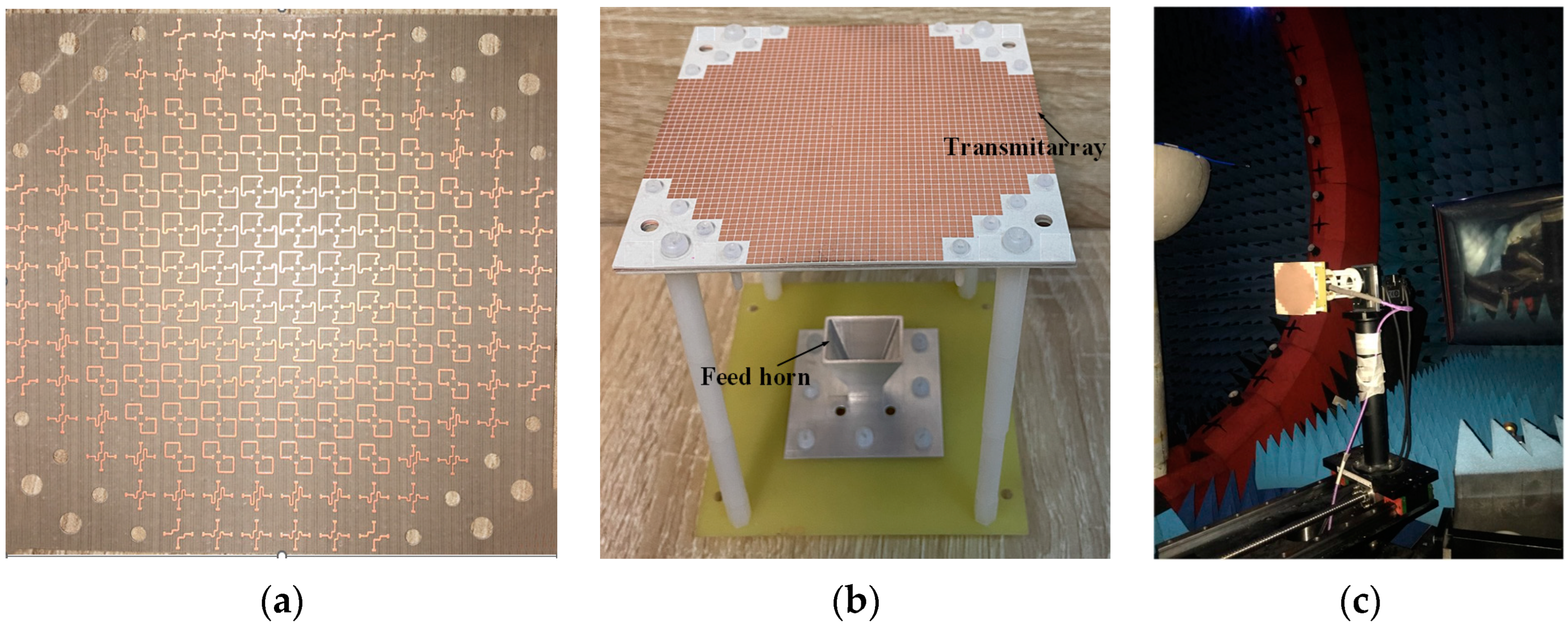

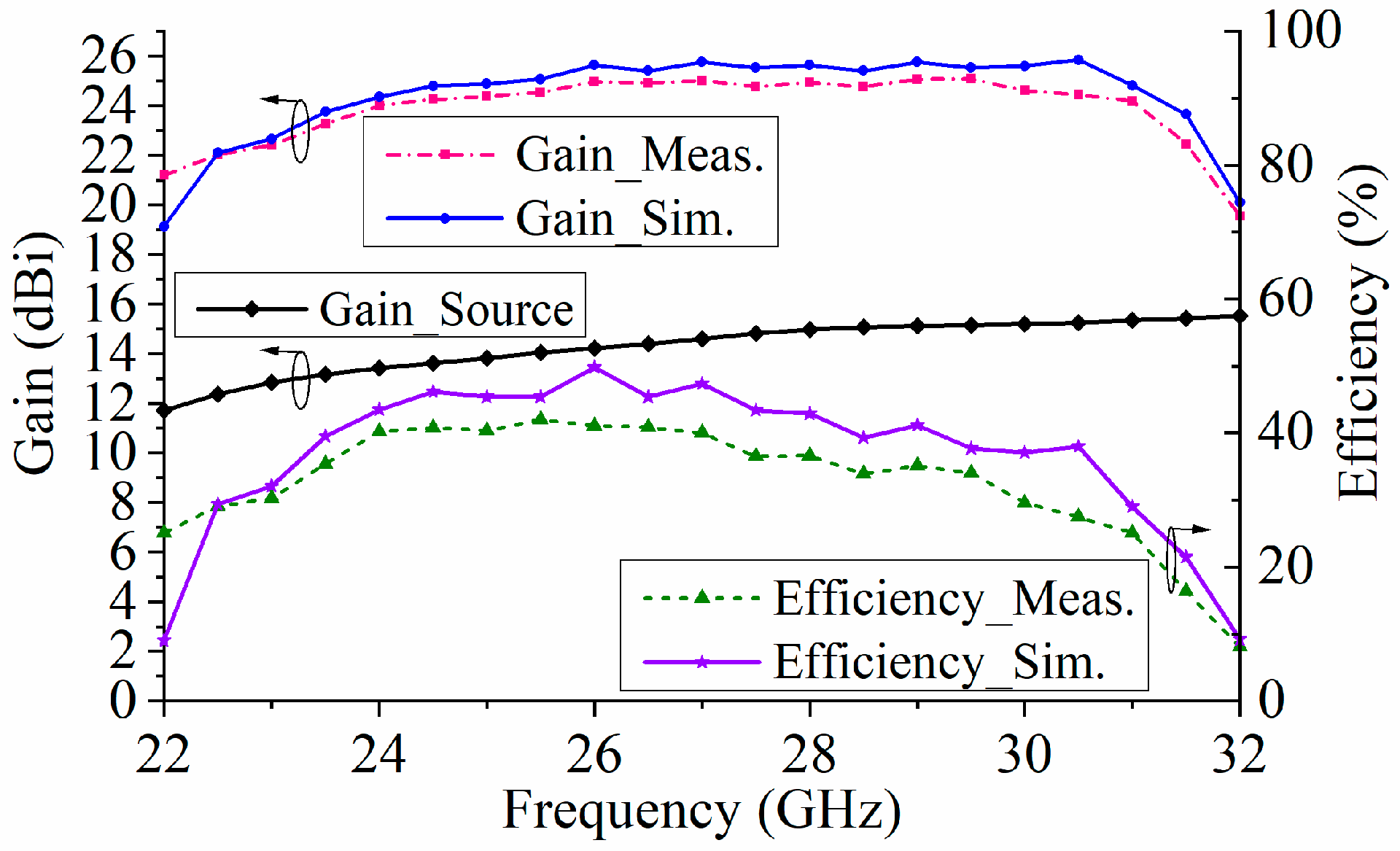
Disclaimer/Publisher’s Note: The statements, opinions and data contained in all publications are solely those of the individual author(s) and contributor(s) and not of MDPI and/or the editor(s). MDPI and/or the editor(s) disclaim responsibility for any injury to people or property resulting from any ideas, methods, instructions or products referred to in the content. |
© 2024 by the authors. Licensee MDPI, Basel, Switzerland. This article is an open access article distributed under the terms and conditions of the Creative Commons Attribution (CC BY) license (https://creativecommons.org/licenses/by/4.0/).
Share and Cite
Cao, Y.; Zhang, M.; Fan, C.; Chen, J.-X. A Broadband Transmitarray Antenna Using a Metasurface-Based Element for Millimeter-Wave Applications. Micromachines 2024, 15, 383. https://doi.org/10.3390/mi15030383
Cao Y, Zhang M, Fan C, Chen J-X. A Broadband Transmitarray Antenna Using a Metasurface-Based Element for Millimeter-Wave Applications. Micromachines. 2024; 15(3):383. https://doi.org/10.3390/mi15030383
Chicago/Turabian StyleCao, Yue, Miaojuan Zhang, Chong Fan, and Jian-Xin Chen. 2024. "A Broadband Transmitarray Antenna Using a Metasurface-Based Element for Millimeter-Wave Applications" Micromachines 15, no. 3: 383. https://doi.org/10.3390/mi15030383
APA StyleCao, Y., Zhang, M., Fan, C., & Chen, J.-X. (2024). A Broadband Transmitarray Antenna Using a Metasurface-Based Element for Millimeter-Wave Applications. Micromachines, 15(3), 383. https://doi.org/10.3390/mi15030383








